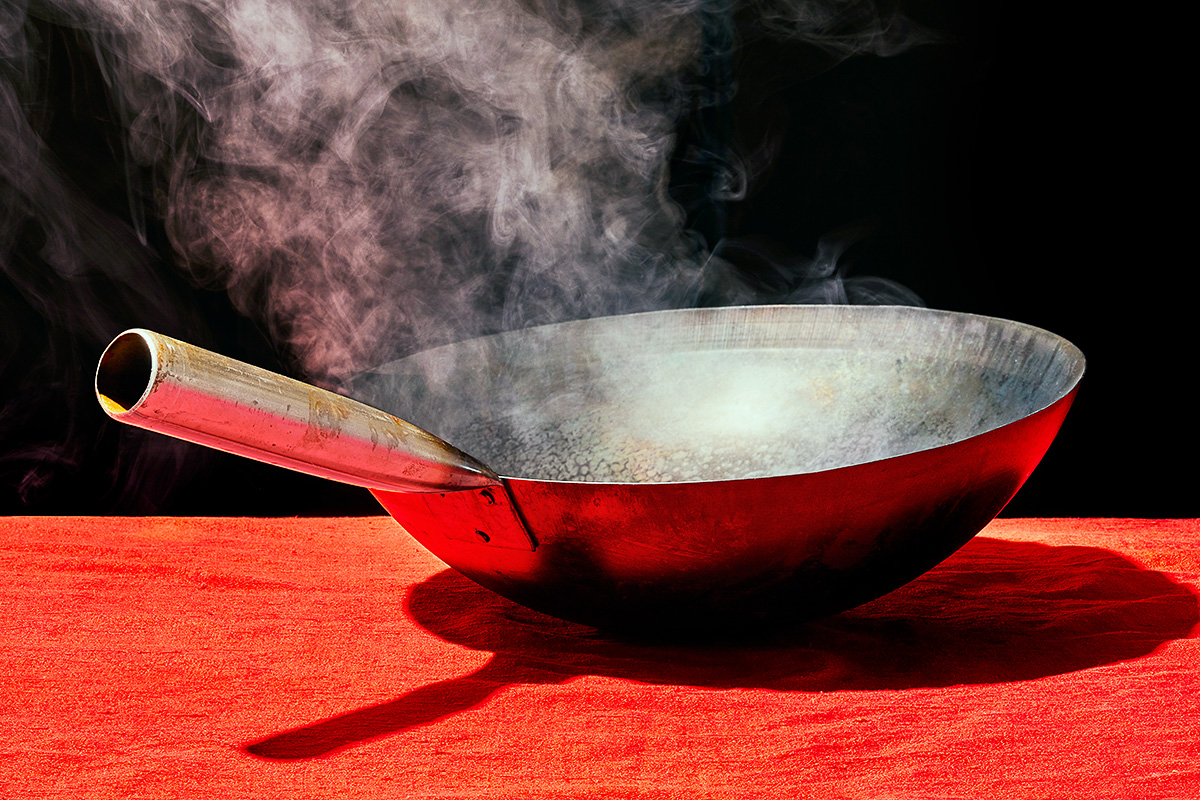
Wok
Abe ConlonFat Rice
“Everybody thinks of the wok as ‘Oh, you can make stir-fries.’ It is so much more than that. It’s the reason Chinese gastronomy is so vast. I tell my guys, ‘There’s a scale of 1 to 10 of the craziest shit you can do on a wok, and you’re like a 2. I’m like a 5.’ We use it for deep-frying. If you have steamer baskets, you can put water in the bottom and steam fish and vegetables. You can put wood chips in the bottom and a fillet of trout on a rack in it for a little smoke action. You can take it outside, put it on a Weber grill, and get that smoky wok hei—that grill-kissed flavor. On top of that, a wok heats up fast, it’s easy to maneuver, and it’s easy to clean. I like mine hand-hammered and carbon steel.”
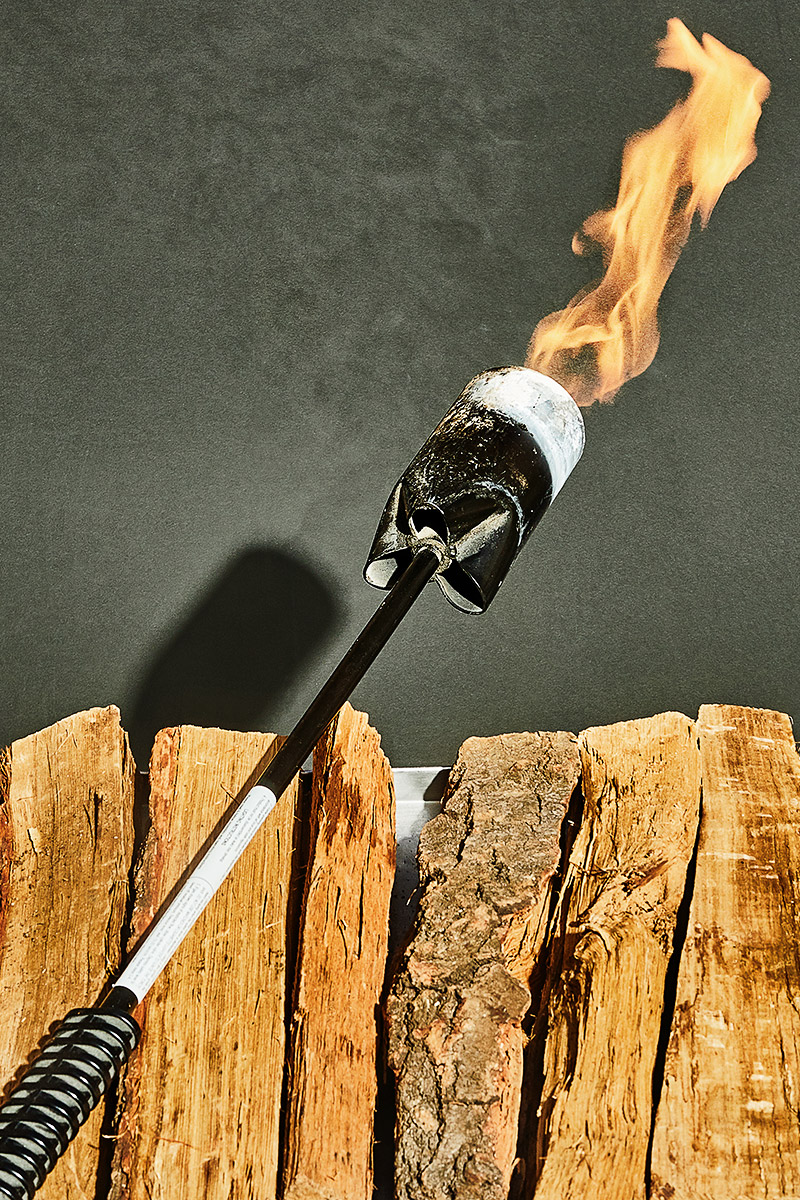
Flamethrower
John ManionEl Che Bar and La Sirena Clandestina
“I was doing an outdoor cooking event in Wisconsin, and I was trying to light a fire with a handheld propane blowtorch, like what you use for crème brûlée. I used to think that tool was pretty cool. But the guy who runs the property said, ‘What are you doing, man? That’s not how you light a fire.’ And he went and got a propane tank, like you’d have on a grill, with a flamethrower attached to it, and proceeded to light this huge fire with an enormous rush of flame in like two seconds. I’m thinking, Whoa, I need this.
“When we first opened El Che Bar, which has a giant Argentine-style wood-fire hearth in its kitchen, we were lighting the fire each day by hand—rolling up newspapers, fanning the flames, and being very precious about the whole thing—and it took like half an hour. That ended when I brought this in. Just whooosh for two seconds, and it’s lit. But we can’t really use the flamethrower during service. It looks cool as hell for the diners, but it makes a noise like a jet engine.”
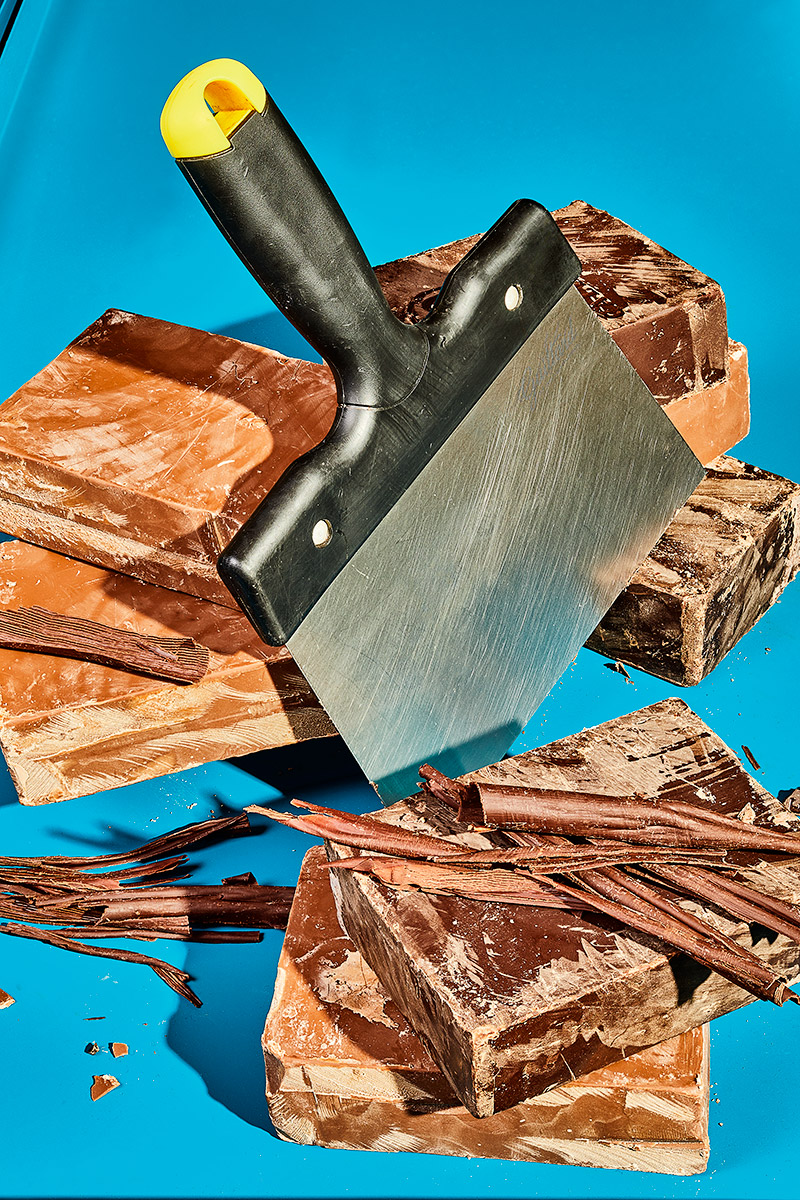
Chocolate scraper
Meg GalusBoka and Somerset
“I selected this not because I use it the most, but because it facilitates the thing that I love doing the most, which is making chocolates. To make bars or candies, you have to temper the chocolate first. This involves melting it down, spreading it on marble, and agitating it to create good crystals so that it sets shiny and hard and has a nice snap. You spread it out, gather it back into itself, spread it out, gather it back in. Part of why I got into pastry is because of the physicality of it—it’s like a Zen thing for me, the repetition.
“The movement of doing it is awkward at first. I was just teaching one of my cooks, and it’s like watching a baby deer—they don’t quite know how to use their limbs to move the scraper and spread the chocolate, and there’s chocolate flying in every direction. You wind up with what we call a chocolate belt where your apron meets the counter.
“My scraper is from a maker of high-quality French pastry equipment. But you can also just go to Home Depot and get a spackle knife for a couple of bucks. Pastry chefs love hardware stores.”
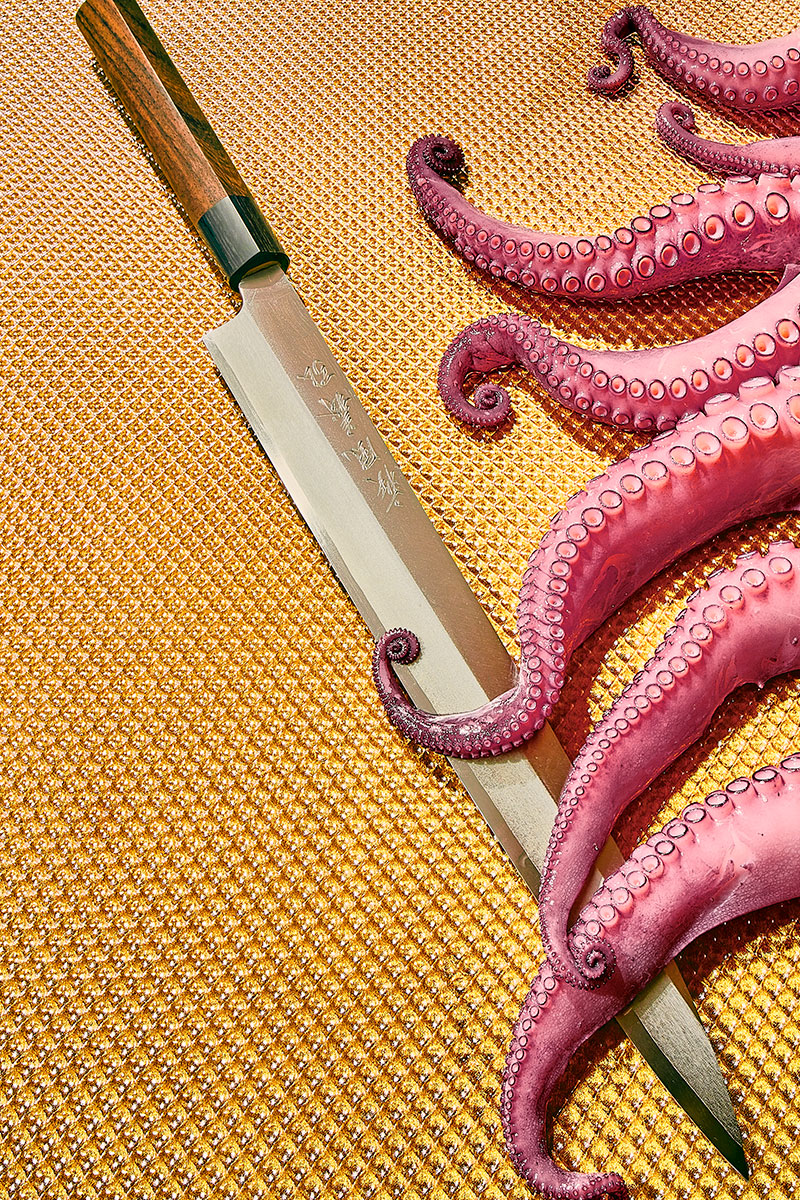
Sashimi knife
Simon LiewRaisu
“I have two yanagiba knives. One has a hammered finish, and the other one [shown] is polished. But the blade is the same, exactly—the same guy made them in Japan, from high-carbon blue steel No. 2. Every single time I get a new knife, I always cut my hand, because I don’t know the knife yet. Until you cut your hand once, you don’t know the knife.
“I learned my knife skills from Katsu Imamura [of Katsu] and Macku Chan [of Macku Sushi]. You watch your teacher, because they only teach you one time—then you have to learn it yourself. You practice by cutting cucumber. Cucumber is very delicate, so you will break it apart. But you can learn to keep it paper-thin. When you cut fish, you have to start from the bottom of the knife and go to the top by the time you reach the tail. You don’t chop, you slice, and you only do one cut. If you want to chop something, use a chef’s knife, Western-style. If you want to cut citrus, use a different knife, because lemon or lime will rust carbon steel. That’s why you don’t share your knife with anyone—the knife belongs to you.”
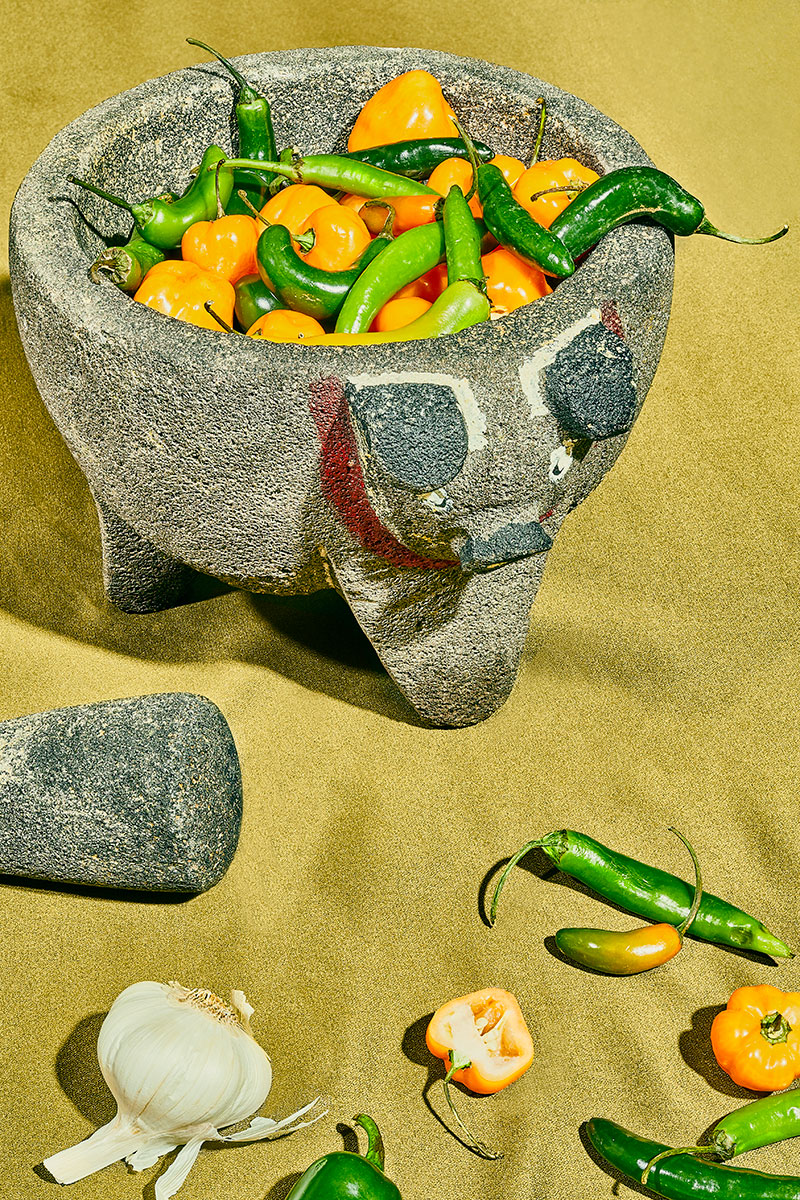
Molcajete
Rick BaylessFrontera Grill, Topolobampo, Xoco, and Leña Brava
“Molcajetes are made of basalt, a dense lava rock, and they’re usually used for liquid preparations like salsa. If you’re making a classic salsa de molcajete, first you put in roasted garlic and roasted chilies, like serranos, and you use a kind of twisting motion as you crush the chilies and the garlic together. You don’t ever pound in a Mexican mortar, because you can break it. Then, once you get that to a coarse paste, one by one you add your roasted tomatoes and crush those, too. It takes a fair amount of work, but when you watch somebody who’s done it all their life, it doesn’t look hard at all.
“I was just at the National Museum of Anthropology in Mexico City, and this piece of kitchen equipment has been used for thousands of years. So yeah, it’s fun to say that you’re part of that line, but there’s another reason you use it, and it has to do with flavor. When you crush things, you get much more flavor out of them than by finely chopping them, or from any appliance. It may look the same, but it doesn’t taste the same.”
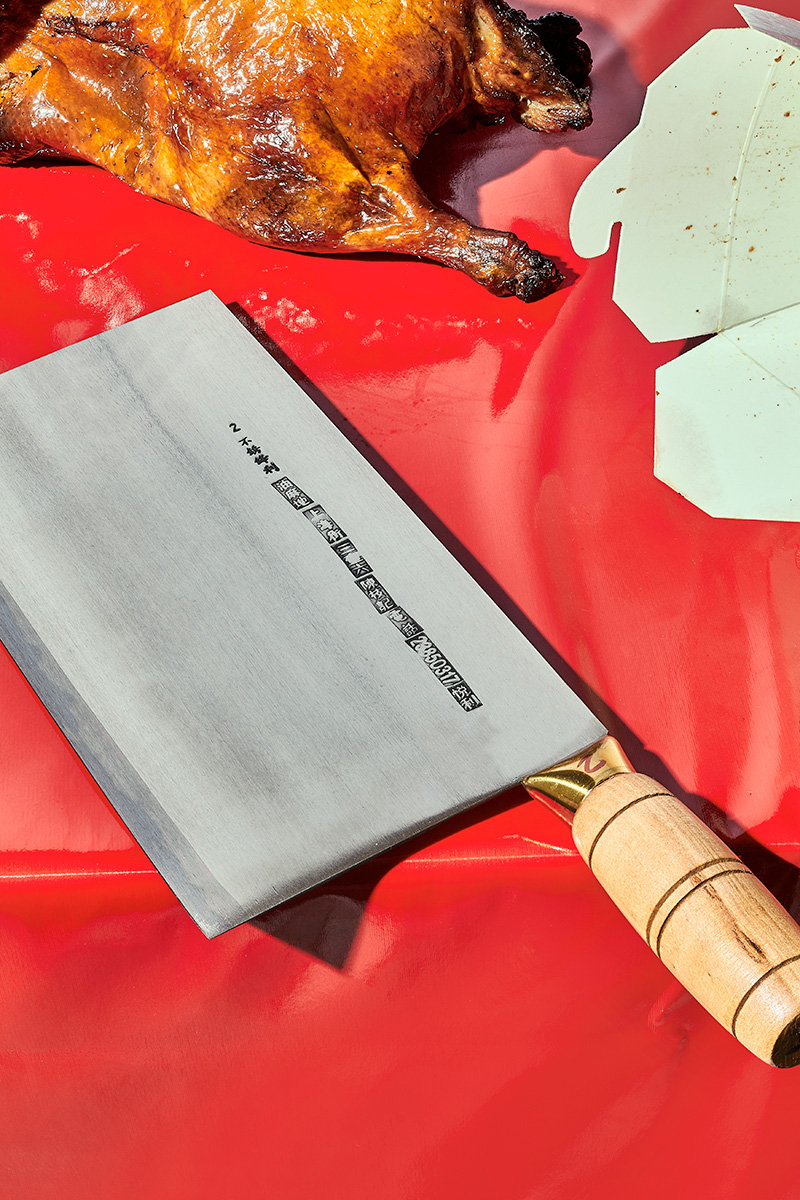
Cleaver
Kelly ChengSun Wah BBQ
“When we were packing for a family trip to Alaska last year, I asked my dad what knives he wanted to bring, and he said, ‘I just need a big cleaver.’
“In the restaurant, we use the cleaver not just for cutting bones but for every kind of prep. You can scale fish, you can mince shrimp, you can chop vegetables, you can chop a chicken. You can do garnishes, like carrot flowers—you use the handle point, the lower corner, because you have better control. When it comes to carving the Peking duck tableside, each person has their own style with it.
“We sharpen our cleavers every day with a whetstone, sometimes twice a day. A couple are 25 or 30 years old. They’re not really worth sharpening too much at this point, so we use them to machete bones. We get our cleavers from a place in Hong Kong—they’re not so expensive that it’s the end of the world if you drop one and it gets a chip. Just grind it out and put it back to work.”
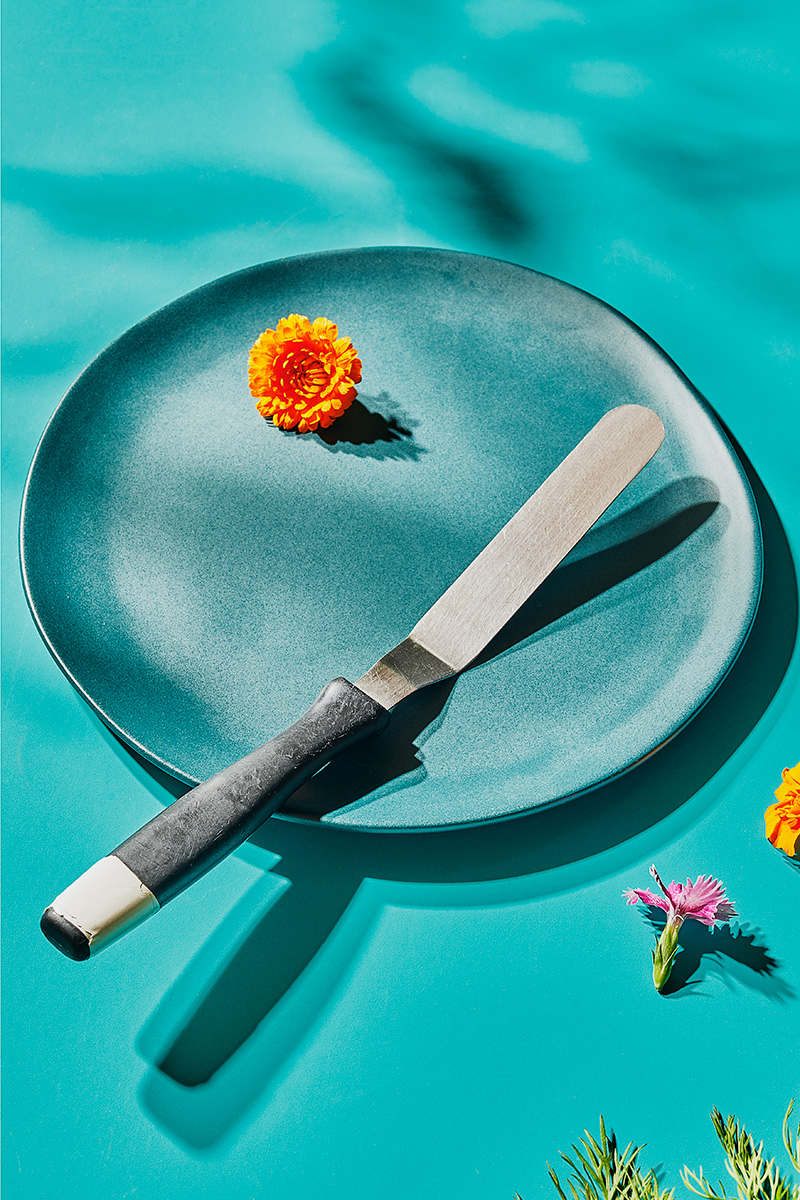
Offset spatula
John ShieldsSmyth and the Loyalist
“This spatula just seems to work for everything, from picking up a piece of fish to placing herbs nicely to scraping things off the bottom of pans. It reminds me to be delicate—if you’re too blunt with it, you’ll crush your food. We have a dish right now, an apple dessert, where we’re putting down this really strong paste made from kombu. It’s got oil in it, so it’s not easy to spoon. And it’s got to be the right amount—too much, it just kills the dish; too little, you don’t really pick it up. But the offset spatula’s perfect, because you’re able to go in with this sharp tool, scrape out the perfect amount, and put it on the plate. I’ve had the same two spatulas for eight years, probably. The older I get, the fewer tools I have. I use my knife, and my offset, and maybe a peeler. That’s really all I need.”


